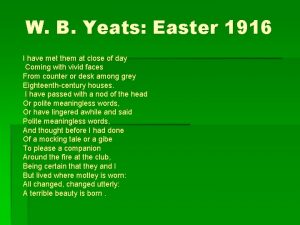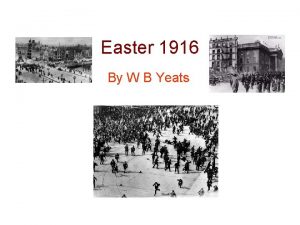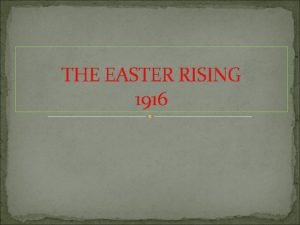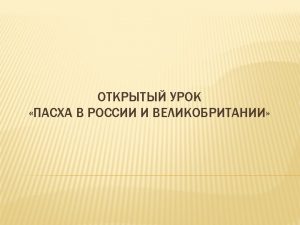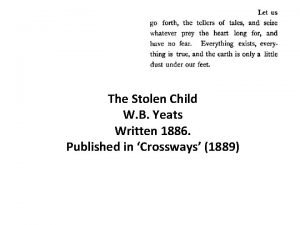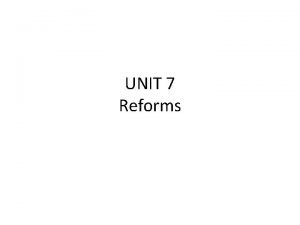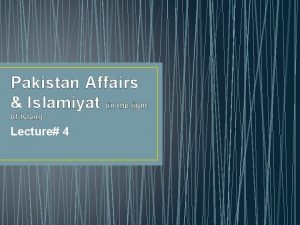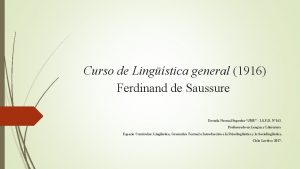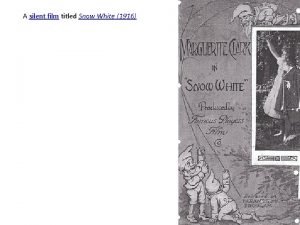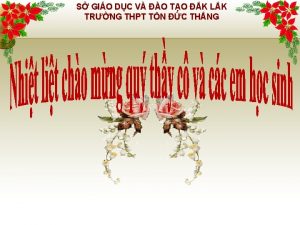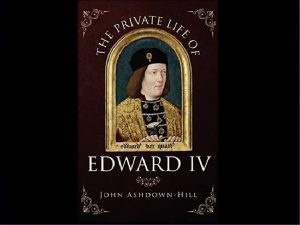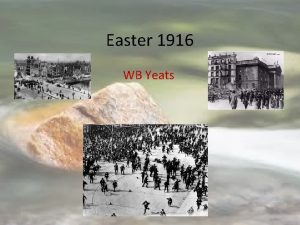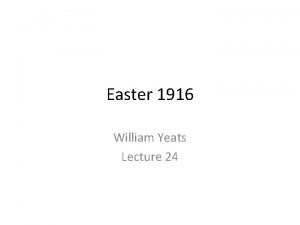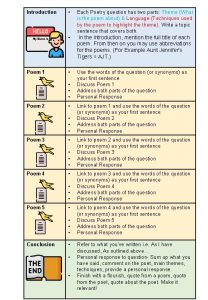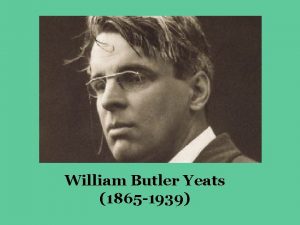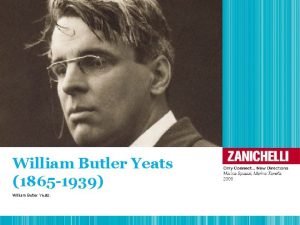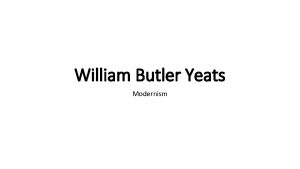Easter 1916 This poem is Yeats response to










- Slides: 10

Easter 1916 • This poem is Yeats response to the events of the 1916 rising. – It is seen as a retraction of the earlier cynicism, expressed in September 1913. • Yeats uses repetition and contrast – The refrain “a terrible beauty is born” – Pre-revolutionary Ireland vs post revolutionary Ireland • We might expect Yeats to celebrate, given his admiration of past heroism. But his reaction is mixed. – This is captured in the refrain which suggests that the greatness of what has been achieved was purchased at a terrible cost…death and suffering.

1 • This stanza expresses Yeats attitude before the rising. He can’t take these would-be revolutionaries seriously. – They seem unremarkable, leading ordinary lives. – They come “from counter or desk among grey 18 th century houses…” • His attitude is reinforced by the “polite meaningless words” he would share with them as they passed by. • He acknowledges his own duplicity towards them in ll. 9 – 12. – Whilst still speaking with them he considers how he will later mock them among his companions at the gentleman’s club. – He and his friends believed these would-be heroes to be no more than actors in a pantomime…. playing a part without ever intending to actually see it through.

1 contd… • His reference to “motley” evokes the colourful costume worn by a clown in a show. • So, up to this point Yeats essentially tells us… – ’this is what I believed of them…this is how I behaved towards them’. His honesty is to be commended. • The refrain brings about an immediate change in tone, however. • It expresses the complexity of what actually happened. This is no simple literary flag-waving exercise. – The refrain acknowledges that the heroic deeds of the patriots came at a terrible price. – nothing will ever be the same again

2 • Yeats describes some of the leaders of the rising in this Stanza. (four of them) • Countess Markiewicz (pp 442) – Yeats contrasts the beauty and grace (loss) of her younger years with the growing nationalism (gain) of her later ones. • See the contrast between the “sweet voice” and the “shrill voice”. There has been loss and gain here. • Padraig Pearse (442) Thomas Mc Donagh – schoolteachers , poets (winged horse – pegasus – symbol for poetic inspiration) – Note Mc. Donagh’s “sensitive…nature” and “sweet…thought” • John Mc. Bride (Maude Gonne’s husband!) – Despite doing “most bitter wrong to some who are near my heart”, – Yeats acknowledges his contribution, his sacrifice – The revolution is no longer the “casual comedy” Yeats had assumed it to be.

2 contd…. • Mc. Bride is somehow redeemed in Yeats’ eyes and transformed, just as the whole revolutionary project (and with it, the oncescorned middle classes) have been transformed. • The refrain, once more, captures the sense of transformation, of contrast between loss and gain brought about by the whole enterprise.

3 • Yeats constructs this stanza around a central contrast – the constantly changing face of nature • • • The living stream The horse that comes from the road / the rider The birds that range from cloud to tumbling cloud. A horse splashing in the water The changing shape of a cloud moor hens calling out to one another – the unchanging reality of patriotic devotion. • • Hearts with one purpose…enchanted to stone Unchanging in the midst of the living stream of change. Characterised as a stone…. strong but lifeless Pearse and his comrades have turned their backs on life in their single-minded devotion to the cause

3 contd • There is an inflexibility about the patriots and their principles. • Their hearts have been“enchanted to stone” by the cause. – Its as though the cause of Irish freedom is so powerful as to exert a kind of spell or enchantment over Pearse and his comrades. – This inflexibility comes at a terrible price – They die…. . become lifeless…. . like stones.

4 • Yeats continues the imagery of hearts of stone. He suggests… – The patriots have blinded themselves to the richness of life in pursuit of their dream – but he refuses to judge them. Instead he believes his role is to remember, to name, “as a mother names her child”. • he also raises an uncomfortable question. – Was this all really necessary? • “Was it needless death after all? ” • England might have granted a measure of independence without the 1916 rising as promised in the Home Rule bill.

4 contd • Yeats concludes that whether or not they were misguided…. – (and what if excess of love / bewildered them till they died? ”) – They deserve their place in history. • By listing their name he immortalises them in his verse. • The rising transformed men he once scorned made fun of into heroes. • Yet, the refrain, once again, reminds us of the complex, problematic aspects of the uprising. – “A terrible beauty is born”.

conclusion • Key theme is the nature and impact of the 1916 rising. • Very effective imagery and symbolism • Use of repetition • Use of questions to provoke reflection (3) • Simple accessible language. • A balanced, honest assessment of the rising including some difficult questions. • A remarkably honest poem. Stanza one is painfully honest and self – revelatory.
